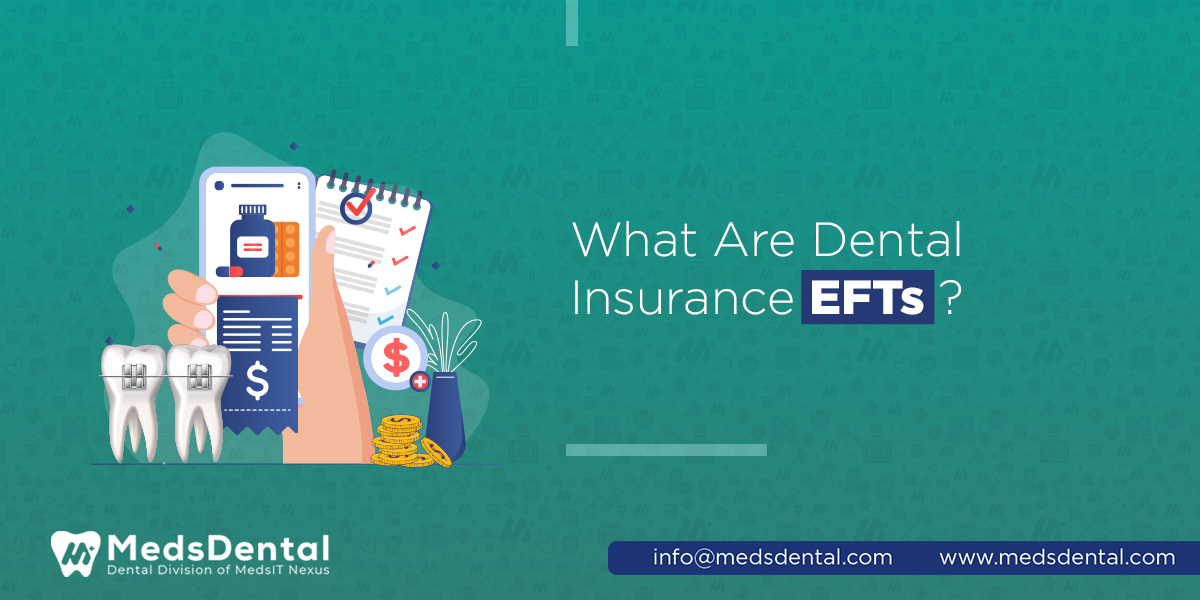

In the era of upgradation with day-to-day changing technologies, businesses are more benefited in terms of payment transaction security and efficiency. Similarly, the financial side of your dental practice has many benefits, such as availing those digital platforms for many reasons, primarily to save your practice from financial losses and extended time spent on managing transactions manually. Dental insurance EFTs, with their many types and features, are fast, secure, and efficient systems of exchanging payment, particularly for your practice to receive dental insurance payments from insurance companies quickly and without the potential obstacles. For instance, there is an extended amount of effort and time spent on managing money exchange, extra costs on paper checks, the need for human interaction, and the risk of human error due to in-person transactions. Moreover, your patients have the security and convenience of their payment processing and to track their insurance payments confidently. Hence, understanding the EFTs and their crucial functions is essential for both your patients and practice so that they do not lag behind in the digital realm and make much out of their dental practice through these shifting methods of payment transfer. Stay with us in this crucial guide that extends the comprehensive information on EFTs, with their many types and advantages for your practice.
EFTs in dental insurance are the shift from traditional and paper-based payment transfers to the digital payment transaction system. For your practice and patient's insurance payment security and risk-free transactions, these systems offer many benefits. Let's learn the perks of dental insurance EFTs and their advanced functions for involved parties.
Electronic funds transfer (EFTs) is a digital system of payment transactions from one bank account to
another without the need and involvement of human employees or paper checking. In dentistry, the system
allows payment transfer from the patient's insurance company to the patient's dental care provider
account or dental practice management system (PMS) without the physical check or manual processing,
providing a convenient and hassle-free experience for patients. EFTs are quicker and more secure methods
of funds transfer using electronic systems.
To streamline the dental insurance payment process, insurance companies process claims and
electronically transfer the agreed-upon payment directly to the provider's bank account when the dental
service is provided. On the other hand, billing staff at a dental practice get the advantage as EFTs
save additional time when receiving payments from insurance companies. Because the technology offers
quick payment as soon as the claim is processed, they don't need to put effort into administrative tasks
related to managing and depositing physical checks. Furthermore, EFTs offer payment security, leaving no
room for the risk of losing checks.
EFTs are the simplified version of payment transactions between patients, dental practices, and
insurance companies, benefiting all parties involved as the modern and efficient way of financial
interaction.
Setting up an account to accept EFT payments is a simple process similar to creating a bank account to receive payments. However, you have already set up EFT reconciliation if you are currently receiving ACH (automated clearing house) transfers. Below are explained some of the requirements to accept and send EFT payments that you must understand:
Despite the fact that your money is going straight into your dental PMS, and insurance companies offer
all of the payment reimbursement, it is yet essential to account for each single payment entered into
the PMS for the bank. Ensuring balancing is important in each system to avoid the risk of applying for
wrong payments into your parent's account.
If the option isn't available, try looking for the offices that set up a separate payment type for these
payments. Each office will need to decide how to set up their own system. Furthermore, it's important to
have these numbers separate when balancing deposits for each day. Also, it's important to know the
source of funds and that all of your dental insurance EFTs received represent the correct amount.
Another query that dental practices face in the process is that they lack knowledge of whether payment
has been deposited into their bank account. Since insurance companies proceed differently in notifying
you of the deposits, the better option is to ask insurance companies about their approach to notifying
you of each deposit when you are setting up for EFTs.
Electronic Remittance Advance (ERA) reporting is one of the most valuable tools in the process of EFTs. These reports help you accumulate all your payment records in one place. Moreover, accumulating all electronic EOBs (Explanation of Benefits) from different insurance companies in a single user-friendly report gives you the advantage of eliminating the need to log into multiple insurance websites.
Explanation of benefits (EOBs) is a statement of your patient's dental insurance plan including information on patient's dental plan, the provider that provided care and the time when the dental service was offered, a reference number called "claim number", and the person who gets the reimbursement for overpayments.
Virtual credit cards or Vcards are another efficient payment transfer tool that many insurance companies offer. However, dental practices may not get these options as favorably due to their associated costs. The reason is these cards require entry in your merchant terminal, so your practice gets standard credit card merchant fees averaging about 2 to 3% of the total insurance payment. In case your practice gets a Vcard as an EFT solution, you must acquire a physical check as an alternative.
Join knots with MedsDental Billing if your practice faces the hurdles of dental insurance billing and payment. We offer comprehensive dental billing solutions to optimize efficiency and enhance revenue for your practice. With our extensive expertise in handling dental insurance Electronic Funds Transfers (EFTs) and communication with insurance companies, we guarantee seamless transactions and timely payments so your dental practice can focus on providing the quality care that the patients need.
© MedsDental. All rights reserved 2026. Powered by MeshSq.